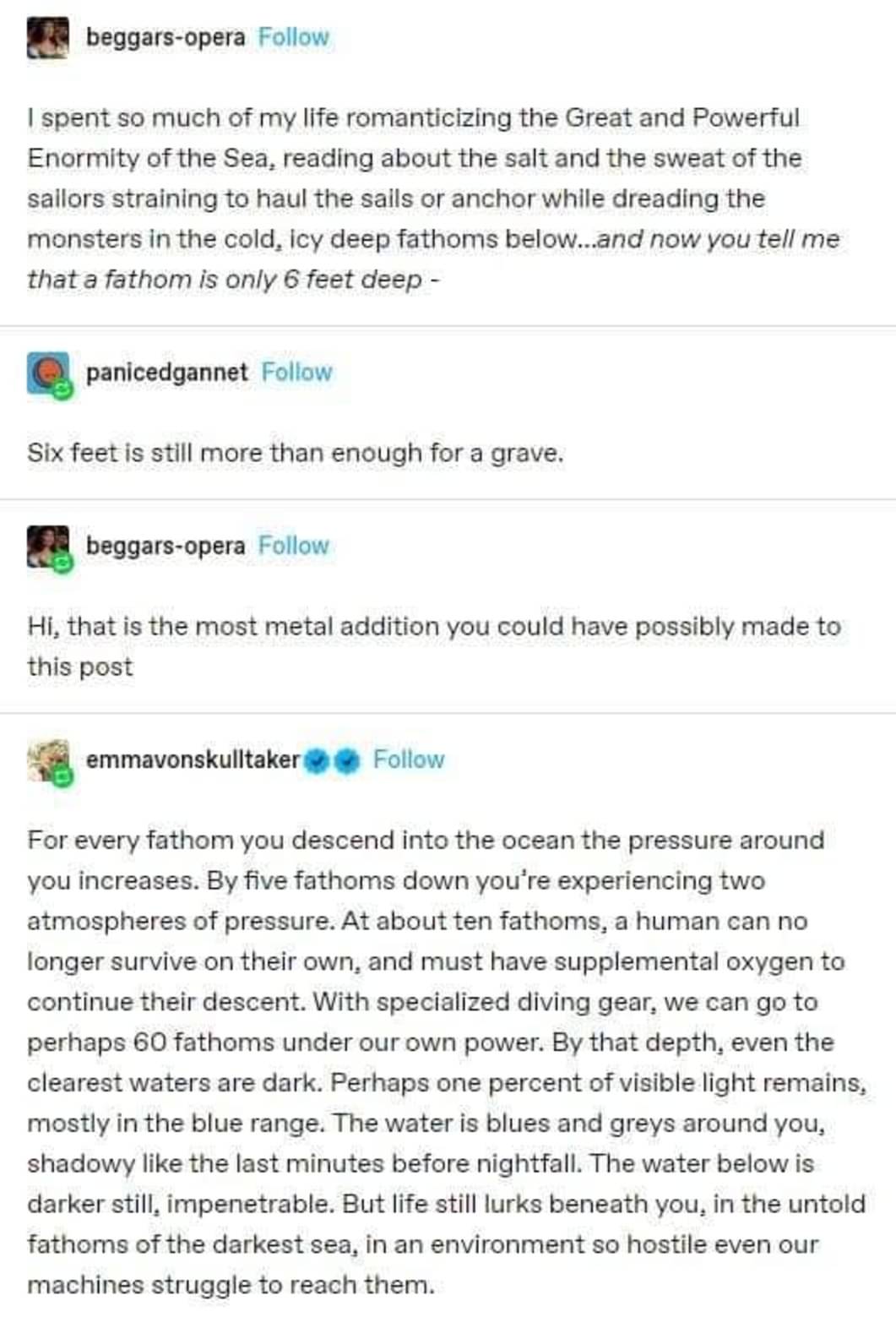this post was submitted on 19 Apr 2024
458 points (98.1% liked)
Science Memes
10970 readers
3645 users here now
Welcome to c/science_memes @ Mander.xyz!
A place for majestic STEMLORD peacocking, as well as memes about the realities of working in a lab.

Rules
- Don't throw mud. Behave like an intellectual and remember the human.
- Keep it rooted (on topic).
- No spam.
- Infographics welcome, get schooled.
This is a science community. We use the Dawkins definition of meme.
Research Committee
Other Mander Communities
Science and Research
Biology and Life Sciences
- [email protected]
- [email protected]
- [email protected]
- [email protected]
- [email protected]
- [email protected]
- [email protected]
- [email protected]
- [email protected]
- [email protected]
- [email protected]
- [email protected]
- [email protected]
- [email protected]
- [email protected]
- [email protected]
- [email protected]
- [email protected]
- [email protected]
- [email protected]
- [email protected]
- [email protected]
- [email protected]
- [email protected]
- !reptiles and [email protected]
Physical Sciences
- [email protected]
- [email protected]
- [email protected]
- [email protected]
- [email protected]
- [email protected]
- [email protected]
- [email protected]
- [email protected]
Humanities and Social Sciences
Practical and Applied Sciences
- !exercise-and [email protected]
- [email protected]
- !self [email protected]
- [email protected]
- [email protected]
- [email protected]
Memes
Miscellaneous
founded 2 years ago
MODERATORS
you are viewing a single comment's thread
view the rest of the comments
view the rest of the comments

It's 6 fathoms deep not 5 fathoms where you're experiencing two atmospheres, and that's absolute not gauge, so 1 atm higher than ambient.
Retard units at its finest. Why simple when it can be difficult.
Wood Hole Oceanographic Institution
Scientific American
Anti Commercial-AI license
It's less the result of a sensible system of units (like how 1 L of water ideally weighs 1 kg), and more fortunate happenstance in this case.
The formula for hydrostatic pressure* is:
∆P= ρ·g·∆h
where ∆P is the difference in pressure across the difference in height ∆h, ρ is the density of the liquid (~1000 kg/m³ for water, slightly more for sea water), and g is the acceleration due to gravity.
So the reason it works out nicely is because g is a little bit less than a nice factor of ten (9.8 m/s²), and the density of sea water is a little bit more than a nice factor of ten (typically 1025 kg/m³), and 1 atm also happens to be almost a nice factor of ten (101,325 Pa). That's why the difference between the approximation and the actual* is less than a percent.
*This assumes a constant density of the liquid, which for water is reasonable, however different depths can have different salinities and temperatures in layers which change the density by less than a percent. Additionally, this assumes a constant acceleration due to gravity. At depth, the acceleration due to gravity can be higher, but this also has an effect that amounts to less than a percent even at the deepest point in the ocean.
ewww standard atmospheres. Use kilopascals like the good lord BIPM intended